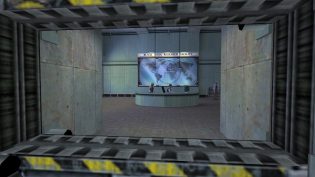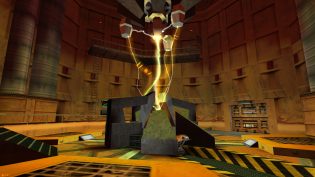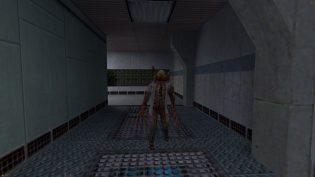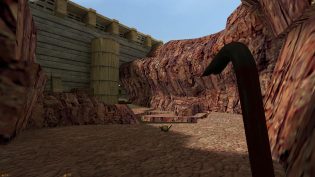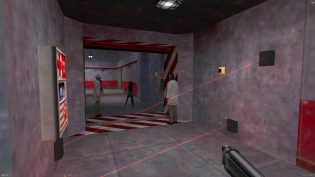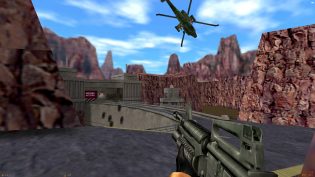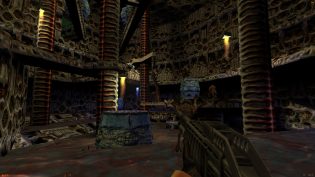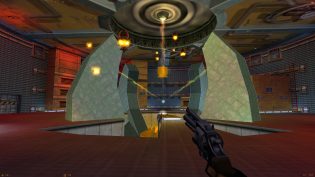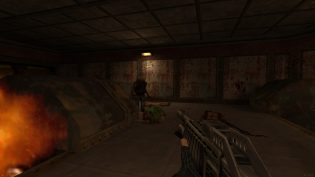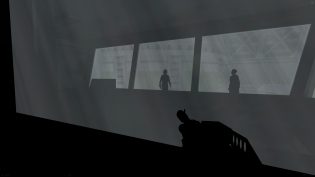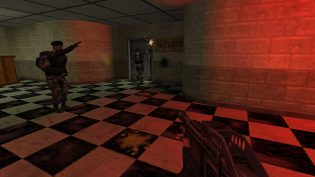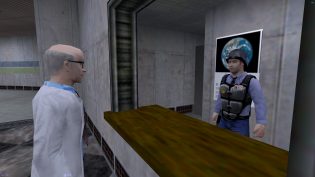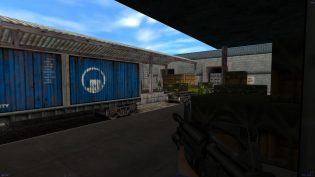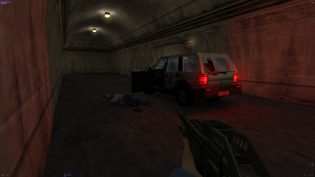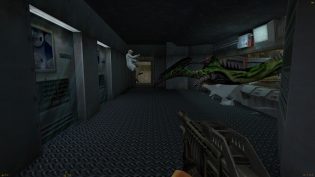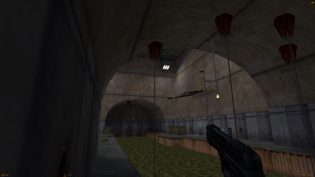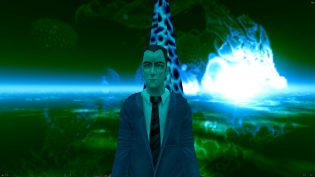O tempora is a series of retrospective posts where I play games from ages before to see if they stood the test of time.
Wow, it’s been a while since I’ve played a Half-Life game… They were never really as important to me as they were for so many people. I did enjoy them all, I played quite a few mods, tried making mods myself (never got far), revisited them a couple of times and still have a lot of respect for what all of them were going for and how they innovated and influenced gaming in general. But I’m not really specifically a fan of the series, more of the admirer.
I planned this revisit since the fan-made remake Black Mesa is nearing its completion, and after finishing the original decided to revisit both of the game’s PC expansions developed by Gearbox Software (the third official expansion Decay remains officially console only, though there is a mod I decided not to play). With all of this done, I feel like my overall opinion on the game hasn’t changed much.
Probably, the strongest point of Half-Life to this day remains its setting and its structure. It was made during the time when a lot of developers were trying to do something seemingly impossible with video games – create realistic virtual worlds where you can do almost anything and expect the world the react accordingly. It was the age of simulations and systems and the most surprising thing about Half-Life to this day is not what it had achieved with those plans but rather what has been cut or completely downplayed in the end. Enemies repopulating locations based on how long players play the game, flocking or leadership-based behaviors in alien creatures, realistic conversations between NPCs – lots of amazing elements that are either almost unnoticed in the final game, or were partially or completely cut before release (some still available via console commands or edits to the game files). The grand vision that was promised was made far less grand and yet the game still managed to become one of the most monumental and innovative titles of its time, its concepts and ideas still echoing in modern titles.
The fictional Black Mesa Research Facility is genuinely interesting to explore, as it’s full of curious faux-science contraptions, somewhat believable infrastructure, lots of scientist and guard NPCs that react and interact with you in curious ways and a sense of wonder. And it’s all interconnected in a way that was fresh for FPS games in 98. It’s not a fully open world you can explore, like something System Shock did 4 years before, but it’s still conveying the sense you tend to get out of exploration titles, like Metroidvania games or classic survival horror titles (curiously, Resident Evil 2, which features giant science lab came out the same year). And those little elements that were to play a bigger role originally simply help to make this world more reactive and interesting than it would’ve been otherwise.
It’s also worth noting that unlike a lot of action titles that came before, Half-Life had very distinct overall structure to how it plays and how it goes with the story, with each “chapter” focusing on some specific mood and pace. The game starts very slow and the first couple of hours are very horror-ish as you watch the experiment go out of control and aliens invade and affect things more and more around the facility. Then it becomes a more traditional action title with a lot of human enemies, eventually reaching something of a boss fight, before resetting the tension and pace back to how the game felt at the start and building up again, but surprising players who understand the game by now. And ending everything with a still somewhat controversial trip to Xen, which feels completely unlike what the game has been up until then. A lot of purely action or action adventure titles up until that point still felt far more like a collection of cool levels and situations in comparison, but it all changed after Half-Life.
And yet… with how much respect and admiration I have for the game, with how many of its segments, especially in the opening chapters, still hold up today in how they feel, there’s a certain frustration I feel every time I play it. There are many sections with first person platforming, something that hasn’t been done that well even to this day and feels especially annoying with how weirdly floaty and momentum-based the controls are in Half-Life. And that’s not even mentioning the “crouch jumping” which fortunately never became a mainstay in FPS since for how cool the concept is, it’s so finicky and annoying to do, it’s always frustrating. The difficulty can be all over the place too. Some of the sections involving the soldiers are infuriating due to their health and numbers, some are a breeze due to how much stuff you may have by that point – they never feel as fun to go against as some of the Xen creatures or anything in Half-Life 2. And some parts of the game are just extremely unclear about what you’re supposed to do, like that section in Surface Tension where you might miss the tiny entrance behind some rocks and have no clue where to go to progress.
These constant little frustrations is what I remember when thinking about Half-Life, unfortunately, not its greatness. And the more the game ages, the less I want to revisit it again. Even ignoring some technical weirdness in its current Steam version, the fact that the sounds are way too loud whatever you do, that widescreen cuts the FOV, while 4:3 actually still renders in Widescreen, just with letterboxing, that some collision boxes are broken – even should this all be fixed, I seriously don’t think I want to replay this game in the future. In fact, there is a version with a lot of these things fixed – Half-Life: Source, though it has its own issues that remained unfixed for many years, – and even that one isn’t looking that alluring now. Curious, how Black Mesa will liven things up.
The expansions certainly don’t help with the feeling much either. Though my memories of both Opposing Force and Blue Shift were more negative than what the games turned out to be in reality, I still can’t really say that playing through them was particularly fun. Opposing Force starts out really well, it has even more tense and horror-ish moments, more adventure-feeling puzzle and exploration focused segments. It even tries to make the action more fun by changing up the arsenal available to the player with weapons that feel more enjoyable to use (still really loud, though). It even expands on the squad concept from the original game by giving the soldiers that can follow you special skills, something that Half-Life 2 would reuse much later in a similar fashion. Oh and the traversal options with the barnacle grapple are really cool.
But by the end, especially the very end, it turns into an infuriatingly action-heavy slog that stops being fun. And for all of its creativity, it starts feeling like another dumb action game with way too many weapons and enemies and not enough room to breathe. It also gets caught up with its own weird fanfic race of aliens that become the main villain and yet are never mentioned anywhere in the series again.
On the other hand Blue Shift is a very basic expansion – something it has been heavily criticized for back when it was released. Yet, today I look at it more favorably than at Opposing Force. It’s far more limited and focused, emphasizing the earlier chapters of the original with more tension and horror atmosphere, more science lab environments. It has very few weapons and none of the ones added in Opposing Force and same goes for the enemies. It’s also shorter. And it’s fine. At least up until the last sections that do feel a bit too long and boring and could’ve been cut without losing anything.
But overall, Blue Shift is actually a pretty nice side story and quite a few ideas from it are reused and improved upon in Half-Life 2. It could’ve been even shorter, could’ve been a tiny bit more varied, but it does feel like a good companion to the main Half-Life game.
With these games completed, I actually feel like I’m done with the original Half-Life. If not forever, at least for an incredibly long time. I’d be interested to see what Black Mesa does, how it feels compared to the original in the end. And I still respect the hell out of this game and even its expansions. But at the same time I find myself not really wanting to play the game again. If you’ve never played the game before, it’s definitely worth playing, not just as a history lesson. Wish I could suggest playing Half-Life: Source as some “definitive” version, but I can’t and the original is probably a better version to go with. But as for me, well there are titles that preceded the game I still enjoy returning to and titles that followed in its footsteps that I find fun, but Half-Life itself, for all its amazing concepts and systems, its great setting, memorable music and sounds… Yeah, I’m pretty sure that I’m done with it.


